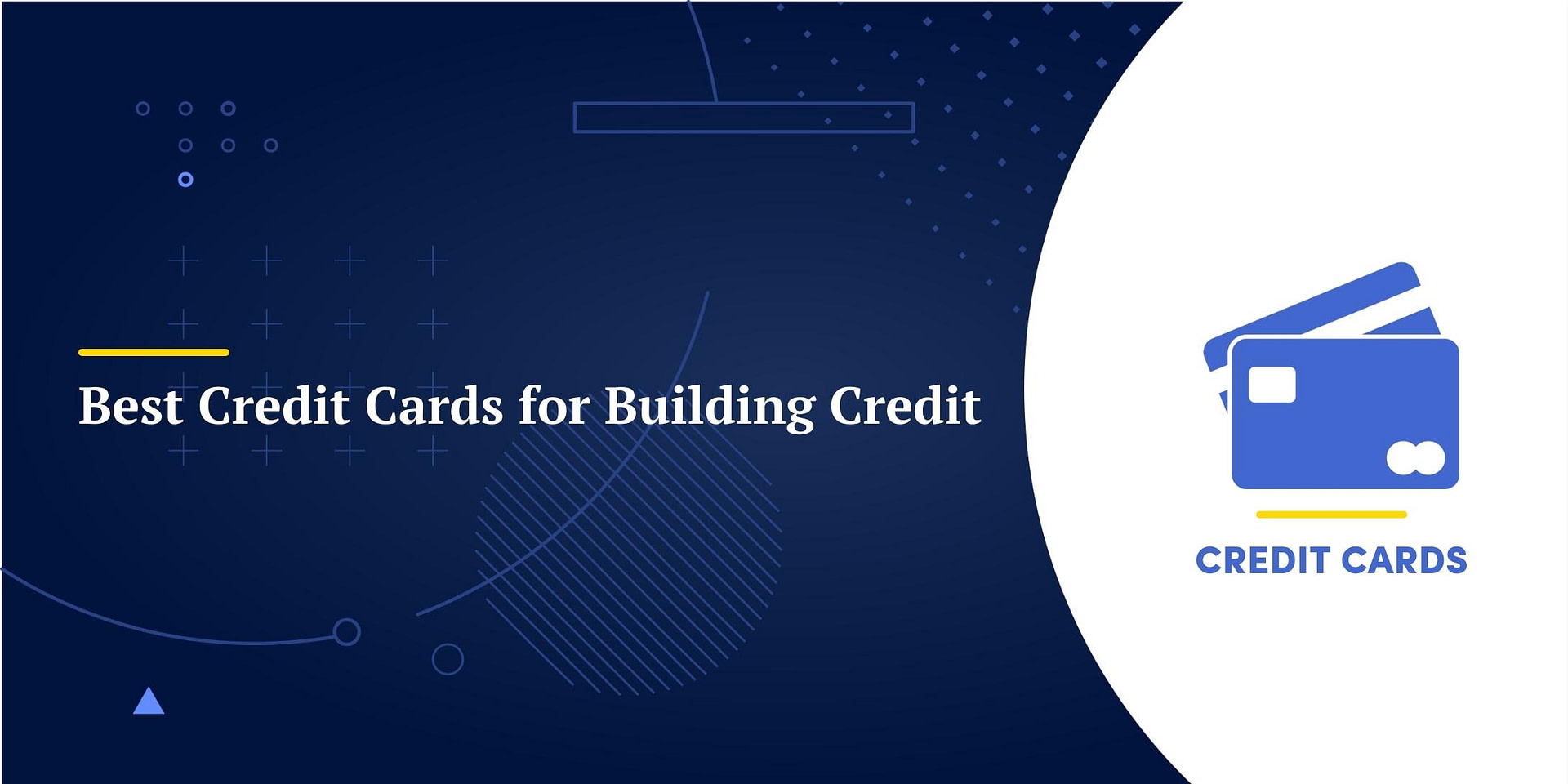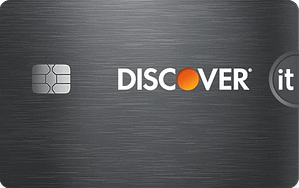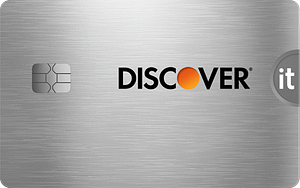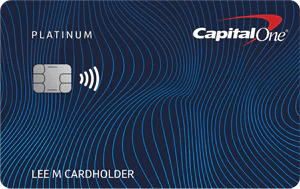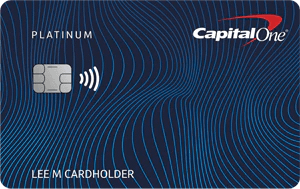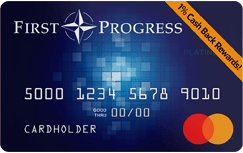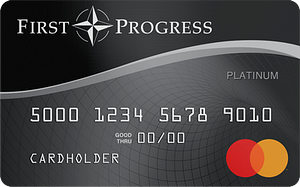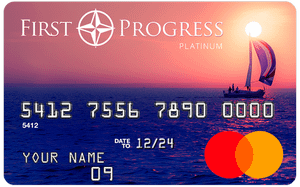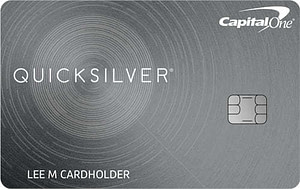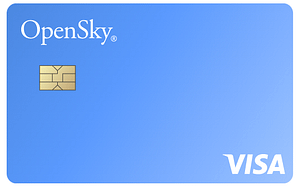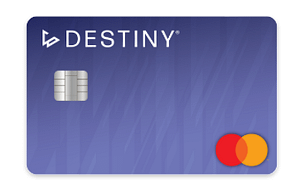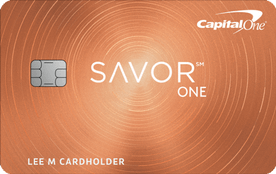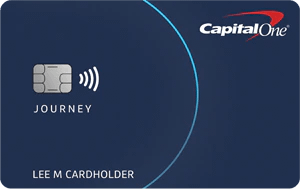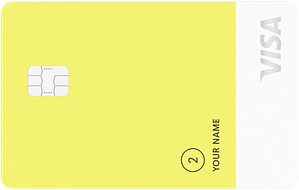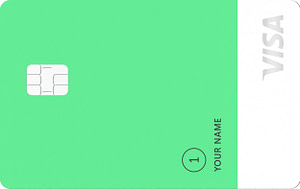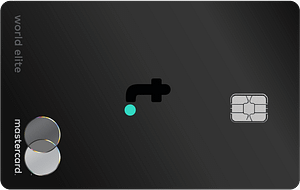Credit cards are a great way to build credit, but you often need good credit to qualify for a credit card. So what do you do when you have no credit or poor credit? Can you still qualify for a credit card?
Yes!
There are many credit cards specially designed for those looking to build their credit. Let’s look at some of the best ones.
Best Credit Cards for Building Credit
In this article, we’ll look at 9 credit cards that are good for building credit and have low eligibility requirements. These cards are designed to help you get started with building credit, whether you are new to credit or trying to rebuild your credit.
Best Overall – Discover It Secured
Best Credit Card for Rebuilding Credit – Capital One Platinum Secured
Best for Low APR – First Progress Platinum Prestige
Best for Rewards – Capital One Quicksilver Secured
Best for No Credit Check – OpenSky Secured Visa
Best for Bankruptcies – Destiny Mastercard
Best Student Credit Card – Capital One SavorOne Student
Best for High Unsecured Credit Limit – Petal 2 Visa
Best Charge Card – Tomo Credit
We’ll look at the pros and cons of each card, summarize their unique features, and explore exactly how each card can help you build credit.
 Things to Remember
Things to Remember
 Things to Remember
Things to RememberIf you’re getting a credit card primarily to build your credit, keep these points in mind while shopping for a card and while using it:
- Secured vs unsecured. Secured cards require a deposit, which becomes your credit limit. They are often available without a credit check. Secured cards are often the best choice for building credit.
- Watch your credit utilization. To build credit, you must keep your balance below 30% of your credit limit. Even less is better. This can be difficult if your credit limit is low, but it’s a vital part of building credit.
- Make every payment on time. On-time payments build credit, late payments destroy it!
- Pay your balance in full. If you pay your balance in full by the statement date, you will never pay interest. Carrying a balance is expensive. Never make just the minimum payment. That’s designed to trap you in a high-interest cycle!
A credit card can help you build credit, but only if you use your credit card wisely.
Now let’s look at the top credit cards for building credit!
1. Discover It Secured

Discover offers a variety of Discover It credit cards, including a secured version to help you build credit. This secured card comes with various features, including cashback rewards on all purchases, plus double cashback on gas station and restaurant purchases. And for all new card members, Discover doubles the cash back you earn in your first year.
In addition to cashback opportunities, the Discover It Secured card offers a preapproval tool, up to a $2,500 credit line, and an upgrade process. All of these features combined help make this card one of the best all-around options for building credit.
| Minimum Deposit | $200 |
| Max Credit Line | $2,500 |
| Annual Fee | $0 |
| APR | 27.24% |
| Cashback Rewards | 5% on rotating categories plus 1% on all other purchases |
| Upgrade Option | Eligible for an unsecured card in as little as 7 months |
| Balance Transfer | 3% fee with a 10.99% intro APR and a 5% fee with a 27.24% APR after the intro period |
| Late Payment Fee | $0 the first time, up to $41 after |

- Cashback opportunity
- Upgrade process
- $0 annual fee
 How Discover It Secured Helps You Build Credit
How Discover It Secured Helps You Build Credit
 How Discover It Secured Helps You Build Credit
How Discover It Secured Helps You Build CreditFrom application to account upgrade, there are multiple ways that the Discover It secured credit card can help you build better credit.
Application
Discover offers a preapproval process that lets you check your eligibility before committing to a hard pull. This secured Discover card does not require a minimum credit score; you can qualify with no credit history.
Once approved, you set your own credit limit based on your deposit. You can start with as little as $200 or as much as $2,500. Be aware of your credit limit. It has a large impact on your credit utilization which is a major part of your credit score.
Credit Reporting
This secured card will report to all 3 credit bureaus every month, just like an unsecured credit card does. And you can check your credit progress monthly using the free TransUnion FICO score Discover provides you.
Discover also offers account lock, and credit freeze features to protect you in the event of fraud and/or identity theft.
Upgrade Process
The Discover It Secured card offers a path toward upgrading to an unsecured card. After 7 months, Discover will begin automatically reviewing your account to determine if you qualify for an upgrade.
If you qualify, your deposit will be returned to you, and you will be upgraded to Discover’s unsecured IT credit card.
 Similar Discover It Products
Similar Discover It Products
 Similar Discover It Products
Similar Discover It ProductsIf you are a student looking to build credit, there are Discover products dedicated to students.
Discover It Chrome Student – $500 starting credit with an APR range of 17.24% – 26.24%. Comes with a 6-month 0% APR offer and 2% cash back on restaurant and gas purchases.
Discover It Student – $500 starting credit limit with an APR range of 17.24% – 26.24%. Comes with a 6-month 0% APR offer and 5% cash back on rotating quarterly categories.
2. Capital One Platinum Secured

This secured credit card from Capital One is designed for individuals trying to rebuild their credit. According to Capital One, “rebuilding” can mean having more than one account in default and/or being denied credit from other creditors.
This credit card combines features of secured and unsecured cards. You’ll need to put up an initial deposit of $49 to $200 to secure a $200 credit line, but subsequent credit increases will be unsecured.
The initial maximum credit line is relatively low ($1,000), and the APR is high. Still, approval for those with poor credit is relatively easy.
If you establish a good payment history, you can upgrade to the fully unsecured Platinum card.
| Minimum Deposit | $200 |
| Max Credit Line | $1,000+ |
| Annual Fee | $0 |
| APR | 29.74% |
| Cashback Rewards | None |
| Upgrade Option | Unsecured credit limit increases starting at 6 months with a chance to upgrade to an unsecured card |
| Balance Transfer | 3% fee |
| Late Payment Fee | $40 |

- Low credit requirements
- Unsecured credit limit increases
- Upgrade path

- High APR
- Low maximum credit limit
- No rewards
 How Capital One Platinum Secured Helps You Build Credit
How Capital One Platinum Secured Helps You Build Credit
 How Capital One Platinum Secured Helps You Build Credit
How Capital One Platinum Secured Helps You Build CreditFrom application onwards, Capital One offers you a step-by-step process for rebuilding your credit with the Platinum Secured card.
Application
Capital One offers a soft pull preapproval process for the Platinum secured card. If you are preapproved and go forward with the application, there will be a hard inquiry.
Once approved, you’ll need to pay a deposit that varies depending on your creditworthiness. Deposit values are $49, $99, or $200. Regardless of the deposit amount, your starting credit line is $200.
If you want a higher initial credit line, you can increase your deposit up to $1000 for a $1000 credit limit.
Credit Reporting
Capital One reports your credit line and payment activity to all 3 credit bureaus. Because the starting credit limit is so low, you’ll need to keep your reporting balance very low to keep your utilization down.
As part of your account, you get access to CreditWise, which provides you with credit alerts and free VantageScores from Transunion.
Upgrade Process
Capital One begins reviewing your account at the 6-month mark. If you have a good payment history and improving credit, Capital One can extend you an unsecured credit limit increase. No extra deposit is necessary.
If you maintain this excellent payment history, Capital One may extend an offer to refund your deposit and upgrade your account to the unsecured Platinum card.
 Similar Capital One Products
Similar Capital One Products
 Similar Capital One Products
Similar Capital One ProductsIn addition to the Platinum Secured, Capital One offers several other credit cards designed for poor credit.
Quicksilver Secured – this secured card has the same APR but a higher max credit limit ($3,000+) and 1.5% cash back on all purchases. Plus, you can qualify for unsecured credit limit increases and an upgrade to the unsecured Quicksilver card.
Platinum (unsecured) – the unsecured version of the Platinum card has all the same features and benefits as the secured version, with no deposit required.
3. First Progress Platinum Prestige

First Progress offers a series of secured credit cards to help customers looking to build or rebuild their credit.
Each card comes with an annual fee and a unique APR. The Platinum Prestige has a 14.74% variable APR with a $49 annual fee.
First Progress has no minimum credit history or score, making the card a good choice for those building or rebuilding credit.
Credit lines start as low as $200 and can go as high as $5000. While running up a balance on a credit card is never a good idea when building credit, the low APR offered can help keep you paying the debt back faster.
| Minimum Deposit | $200 |
| Max Credit Line | $5,000 |
| Annual Fee | $49 |
| APR | 14.24% |
| Cashback Rewards | 1% on all purchases |
| Upgrade Option | None |
| Balance Transfer | Not available |
| Late Payment Fee | Up to $41 |

- Low APR
- Qualify for all 3 cards
- No credit score required

- No preapproval option
- Annual fee
 How First Progress Platinum Prestige Helps You Build Credit
How First Progress Platinum Prestige Helps You Build Credit
 How First Progress Platinum Prestige Helps You Build Credit
How First Progress Platinum Prestige Helps You Build CreditThe Platinum Prestige card has no preapproval option or upgrade feature, but the high credit limit and low APR are still decent features for building credit.
Application
First Progress does not offer a preapproval process, so you must risk the hard inquiry. But, as Frist Progress doesn’t require a minimum credit score, approval chances are high.
If you are approved, you will be approved for all 3 Platinum Prestige secured cards if you are approved. After choosing the card you want, you must provide a security deposit. The minimum deposit is $200, and the max is $2000. The higher the deposit, the higher your credit limit will be. This will make it easier to keep your credit utilization low.
Credit Reporting
The Platinum Prestige card will report to all 3 credit bureaus each month. But you must keep a close eye on your utilization if you want to build good credit.
For instance, with an initial line of $200 and a $49 annual fee, your available credit line for your first month will be $151. This is already a 24% utilization rate. You can improve utilization by paying a higher initial deposit or requesting credit limit increases later.
Upgrade Process
First Progress does not offer an upgrade option. Instead, after 6 months of on-time payments, they let you open a second card with them. This ability to immediately qualify for a second card could help you build credit faster.
 Similar First Progress Products
Similar First Progress Products
 Similar First Progress Products
Similar First Progress ProductsIn addition to the Platinum Prestige, First Progress offers two other secured credit-building cards.
Platinum Elite – annual fee of $29 with an APR of 24.74%. After 6 months of on-time payments, you could receive an invitation to apply for an unsecured card.
If you qualify for one of First Progress’s secured cards, you’ll qualify for all three. And you can have multiple cards open with First Progress.
4. Capital One Quicksilver Secured

Designed for individuals with fair credit, the Quicksilver secured card lets you earn rewards while you build credit.
With this card, you’ll earn 1.5% cashback on all purchases. You can use your cash back for statement credit or to purchase gift cards.
This Capital One card will require an initial security deposit, but with good payment history, you may be extended unsecured credit limit increases. After several months of on-time payments, you might be offered a refund of your deposit and an upgrade to the unsecured Quicksilver card.
The rewards earning potential and upgrade path make the Quicksilver secured card a good choice for those just beginning to build credit.
| Minimum Deposit | $200 |
| Max Credit Line | $3,000+ |
| Annual Fee | $0 |
| APR | 29.74% |
| Cashback Rewards | 1.5% on all purchases |
| Upgrade Option | Unsecured credit limit increases starting at 6 months with a chance to upgrade to an unsecured card |
| Balance Transfer | 3% fee |
| Late Payment Fee | Up to $40 |

- Earn rewards
- Unsecured credit limit increases
- Upgrade path
 How Quicksilver Secured Helps You Build Credit
How Quicksilver Secured Helps You Build Credit
 How Quicksilver Secured Helps You Build Credit
How Quicksilver Secured Helps You Build CreditWith a preapproval process, free credit monitoring, and automatic credit line increases, Capital One’s Quicksilver secured card can help you take the necessary steps to improve your credit.
Application
Capital One offers a preapproval process that helps you avoid an unnecessary hard pull of your credit. For approval, Capital One requires “fair” credit, which they define as those with a little credit history or those with a single default.
Once approved, you must provide a minimum deposit of $200. Depending on your creditworthiness, you can pay an additional deposit to set your credit limit at $1000 – $3000. The more you add to your deposit, the easier it will be to keep your credit utilization low.
Credit Reporting
The Quicksilver secured card will report to all 3 credit bureaus. And you can keep track of your credit-building process using CreditWise. This service sends you credit alerts and gives you free access to your TransUnion VantageScore.
Upgrade Process
After 6 months of opening the account, Capital One begins automatic reviews of your credit. With good payment history and no new concerns on your credit report, Capital One may extend you a no-deposit required credit limit increase.
If your credit continues improving, Capital One may offer to convert your account to one of their unsecured Quicksilver cards. If you qualify, you’ll receive a refund of your deposit.
 Other Quicksilver Cards
Other Quicksilver Cards
 Other Quicksilver Cards
Other Quicksilver Cards5. OpenSky Secured Visa

This secured Visa by OpenSky doesn’t require a credit check. That means there is no minimum score, and you can get approved with no credit, bad credit, bankruptcies, and more.
You’ll need to put down a deposit and verify your income info to ensure you can responsibly use the card, but your credit will not be a factor in the approval process.
Credit limits start at $200 and go as high as $3000, with the option of unsecured credit limit increases after 6 months. The APR is set at a reasonable 21.64% rate.
With no credit check and the ability to set your credit limit, this secured Visa from OpenSky is great for those trying to rebuild credit and those new to credit.
| Minimum Deposit | $200 |
| Max Credit Line | $3,000 |
| Annual Fee | $35 |
| APR | 21.64% |
| Cashback Rewards | None |
| Upgrade Option | Upgrade to Gold in as little as 6 months |
| Balance Transfer | Not available |
| Late Payment Fee | Up to $38 |

- No credit check
- Set your credit limit
- Reasonable APR
 How the OpenSky Secured Visa Helps You Build Credit
How the OpenSky Secured Visa Helps You Build Credit
 How the OpenSky Secured Visa Helps You Build Credit
How the OpenSky Secured Visa Helps You Build CreditStarting with no credit check, the OpenSky Secured Visa utilizes several account features to help you on your path toward better credit.
Application
The application process consists of entering in some basic personal and income information and selecting the amount of your deposit. Deposit amounts start at $200 and go up to $3000. This deposit will serve as your credit limit once you are approved.
If you don’t have a bank account, no problem. OpenSky lets you fund your deposit by sending them a money order; no linking to a checking account is needed.
OpenSky does not perform a credit check, so even if your application is denied, there is no damage to your credit score.
Credit Reporting
OpenSky reports your account activity to each of the three credit bureaus monthly. How much your initial deposit is versus how much you spend will be a significant factor in your credit score growth. OpenSky recommends utilizing no more than ⅓ of your credit limit.
Upgrade Process
In as little as 6 months, you can qualify for an upgrade to OpenSky’s unsecured account. This allows you to receive unsecured credit limit increases on top of your existing deposit-funded credit limit. Your security deposit is only refundable when you close your OpenSky account.
 Alternatives to OpenSky
Alternatives to OpenSky
 Alternatives to OpenSky
Alternatives to OpenSky6. Destiny Mastercard

Let’s be honest; this card is nothing to write home about. The credit limit is low, the APR is high, and the annual fee is atrocious. But, this card is specifically tailored to those with a history of bankruptcy, which is something other lenders will shy away from.
This card is not predatory like many products geared towards those with a bankruptcy on their credit profiles. That said, this card is not meant to hold long-term.
If you can use the card responsibly by keeping your spending low and making on-time payments, this card can help you improve your credit enough to qualify for better credit-building cards.
| Minimum Deposit | $0 |
| Max Credit Line | $300 |
| Annual Fee | $59 – $99 |
| APR | 24.9% |
| Cashback Rewards | None |
| Upgrade Option | None |
| Balance Transfer | Not available |
| Late Payment Fee | Up to $40 |

- Approval with bankruptcy
- Preapproval process
- No deposit needed

- High annual fee
- Low credit limit
- No additional card benefits
 How the Destiny Mastercard Helps You Build Credit
How the Destiny Mastercard Helps You Build Credit
 How the Destiny Mastercard Helps You Build Credit
How the Destiny Mastercard Helps You Build CreditWhen you are trying to build credit after bankruptcy, the Destiny Mastercard application and credit reporting process can help you achieve a better score and let you qualify for better products.
Application
The Destiny Mastercard offers a pre-qualification process that performs a soft pull to see if you are eligible for the card. A hard inquiry is only completed once you move forward with the application.
As an added benefit, Destiny is an unsecured card (no deposit required) and has few credit requirements. Destiny states, “All credit histories will be considered, even with a prior bankruptcy!”
That said, your credit determines whether you will owe a $59 or $99 annual fee.
Credit Reporting
The Destiny Mastercard reports account activity to all 3 credit bureaus. But, since the credit limit is so low ($300), you must pay close attention to your utilization ratio. Just the annual fee charged your first month (max $79 for the first year) will increase your utilization ratio.
Keeping your utilization low and making your payments on time will help you improve your credit score over time.
Upgrade Process
Destiny does not offer any kind of upgraded product, nor do they offer unsecured credit limit increases.
Once your credit is improved enough to qualify for better credit cards, you should close your account with Destiny to avoid the high annual fee.
 Alternatives to Destiny Mastercard
Alternatives to Destiny Mastercard
 Alternatives to Destiny Mastercard
Alternatives to Destiny MastercardWhile there are no other cards in Destiny’s portfolio, there are several nearly identical credit cards geared towards those with poor credit history, such as:
These cards all have APRs and fee structures similar to those of the Destiny Mastercard.
7. Capital One SavorOne Student

The SavorOne card for students offers a great rewards program, reasonable APR, and lenient eligibility requirements. You can apply for this card even when you don’t have any credit.
However, you will need to be a college student to qualify.
Capital One defines a college student as “anyone currently enrolled, or admitted and planning to enroll in the next 3 months, at an accredited university, community college or other higher education institution.”
If you are just beginning to build credit and are college bound, this card could be a great choice to start you on your credit-building path.
| Minimum Deposit | $0 |
| Max Credit Line | Not disclosed |
| Annual Fee | $0 |
| APR | 19.24%, 25.24%, or 29.24% |
| Cashback Rewards | 3% on dining, entertainment, streaming services, and grocery store purchases, plus 1% on all other purchases |
| Upgrade Option | Graduating can increase your credit limit |
| Balance Transfer | 3% fee |
| Late Payment Fee | Up to $40 |

- High cashback rewards
- Reasonable APR range
- Unsecured
- No credit score needed

- Need to be a college student
 How Capital One SavorOne Student Helps You Build Credit
How Capital One SavorOne Student Helps You Build Credit
 How Capital One SavorOne Student Helps You Build Credit
How Capital One SavorOne Student Helps You Build CreditFrom application through college graduation, the Capital One SavorOne student credit card with no annual fee and great rewards program is a valuable tool for building your credit and beyond.
Application
Capital One offers a preapproval process that lets you see if you are likely to qualify for the card without risking a hard inquiry. Once you proceed with the application, you must agree to a hard pull.
Since this card is geared toward college students, there is no minimum credit score required. In fact, you don’t even need to have a credit score. However, you will need to be a college student to qualify.
Credit Reporting
Capital One reports your account activity to all 3 credit bureaus. Since this is a student card, you might not have a high credit limit, so you’ll need to watch your credit utilization closely.
On the upside, your purchases will qualify for cashback. Plus, you’ll be eligible to earn a $50 cash bonus when you open the card. Using this cashback as a statement credit can help lower your credit utilization.
Upgrade Process
When you graduate, you keep the SavorOne card; it is exactly the same as the non-student version. You might want to update your income info once you get a job after college, as this could qualify you for a credit limit increase.
 Similar Cards from Capital One
Similar Cards from Capital One
 Similar Cards from Capital One
Similar Cards from Capital OneIf the SavorOne isn’t the right fit, Capital One offers several other student credit cards.
Journey for Students – a flat 1% cashback card with a 29.74% interest rate. Provides a bonus of 0.25% cash back for on-time payments.
In addition to student cards, you can look at Capital One’s secured credit cards if you don’t have much credit or income.
8. Petal 2 Visa

A newer addition to the credit card market, the Petal cards are designed to help everyone qualify for rewards-earning credit cards, regardless of credit.
The Petal 2 card comes with 1.5% cashback plus bonus earnings at certain retailers. Plus, you can track your credit score, and you are never charged any fees, not even late fees.
The Petal 2 card is unsecured, and no minimum credit score is needed to qualify. If you do not have sufficient credit, Petal will use a proprietary method that looks at your banking history, bill payments, and income to create a CashScore.
Using a CashScore and a credit score makes the Petal Visas a good choice for those with no credit history or thin profiles.
| Minimum Deposit | $0 |
| Max Credit Line | $10,000 |
| Annual Fee | $0 |
| APR | 17.24% – 31.24% |
| Cashback Rewards | 1% for the first 6 months, 1.25% for the next 6 months, and 1.5% after a full year, plus bonus cashback opportunities |
| Upgrade Option | None |
| Balance Transfer | Not available |
| Late Payment Fee | $0 |

- Rewards opportunities
- Unsecured
- $0 fees
- High max credit limits
 How Petal 2 Helps You Build Credit
How Petal 2 Helps You Build Credit
 How Petal 2 Helps You Build Credit
How Petal 2 Helps You Build CreditWith a preapproval process and the credit leap program, the Petal 2 card can be a good resource for building or rebuilding your credit.
Application
Petal offers a preapproval process for their cards. This lets you see which card(s) you are eligible for before risking a hard inquiry.
Additionally, if you don’t have much credit history, Petal will request linking to your bank account. This allows them to generate a CashScore in place of a credit score. Your CashScore can qualify you for a Petal card even if your credit score doesn’t.
Credit Reporting
Petal reports your account activity to all 3 credit bureaus. Depending on your creditworthiness, you could be approved for a credit limit as low as $300. But, using Petal’s Leap program, you can qualify for credit limit increases every six months. The maximum credit limit is $10,000!
You should always strive to make your payments on time, but if you are late, Petal does not charge you a fee. A payment more than 30 days late will negatively affect your credit score.
Petal also offers free access to your Experian credit score on the Petal app to help you track your progress.
Upgrade Process
Petal does not offer any kind of upgrade process. Whichever Petal card you start with is the one you keep. If you are not initially approved for the Petal 2, you can reapply in as little as 30 days.
 Other Petal Cards
Other Petal Cards
 Other Petal Cards
Other Petal CardsThe Petal 2 card comes with the highest credit score or CashScore requirements of all the Petal cards. If you don’t qualify for Petal 2, you might be eligible for one of the other Petal cards.
Petal 1 – $0 annual fee card that earns cashback with select merchants. Credit limits range from $300 to $5,000, and APRs start at 24.24% and go as high as 33.74%.
Petal 1 Rise – card has a $59 annual fee, the lowest eligibility requirements, but still earns cashback at select merchants. Credit limits are capped at $3,500, and APRs go as high as 34.74%.
You can also take a look at other poor-credit, unsecured card options.
9. Tomo Credit

Tomo offers a unique alternative to traditional credit cards with its card. This card operates more like a debit card but reports like a credit card to the credit bureaus. All charges on your Tomo card are automatically paid off every 7 days.
Tomo doesn’t exclusively use your credit score as a determining factor in card approval. Instead, they are more concerned with your banking history, balance, and income.
With no minimum credit requirements, the Tomo card could be a decent alternative for those struggling to qualify for traditional credit cards without a credit history. Plus, the fact that this is a charge card can make a good choice for those rebuilding credit who struggle with debt.
| Minimum Deposit | $0 |
| Max Credit Line | $10,000 |
| Annual Fee | $2.99/month |
| APR | None |
| Cashback Rewards | Limited partner rewards |
| Upgrade Option | None |
| Balance Transfer | Not available |
| Late Payment Fee | None (account is frozen if late) |

- No hard inquiry
- No APR
- High credit limit

- Monthly subscription fee
- No ability to carry a balance
 How Tomo Helps You Build Credit
How Tomo Helps You Build Credit
 How Tomo Helps You Build Credit
How Tomo Helps You Build CreditThis is a placeholder tab content. It is important to have the necessary information in the block, but at this stage, it is just a placeholder to help you visualise how the content is displayed. Feel free to edit this with your actual content.
The card offered by Tomo offers automatic payments and no credit requirements. It can help you build credit without incurring debt.
Application
There is no pre-approval process for Tomo, but when Tomo checks your credit, they will only perform a soft inquiry. Applying for a Tomo card will not hurt your credit.
Tomo also doesn’t have any minimum application requirements. They consider alternative information, such as banking history, so your credit score is not a disqualifying factor.
Unfortunately, if your application is denied, you cannot reapply.
Credit Reporting
Tomo reports your account activity to all 3 credit bureaus each month.
Your credit limit, which Tomo calls your spending power, is set based on your banking history and account balance. This limit can be as low as $100 or as high as $10,000. To help keep your utilization low, Tomo auto-deducts payments every 7 days.
Because you cannot carry a balance, you cannot incur a late payment.
Upgrade Process
There is no upgrade process for Tomo, nor is there a credit limit increase program. Tomo suggests the best way to increase your spending power is to consistently make on-time payments and link your Tomo account to all your bank accounts.
For more information on Tomo, read our full review here.
 Alternatives to the Tomo Card
Alternatives to the Tomo Card
 Alternatives to the Tomo Card
Alternatives to the Tomo CardComparing the Best Credit Cards to Build Credit
Here’s a comparison of the key terms and features of the 9 credit cards on our best credit cards for building credit.
How to Choose the Best Credit Card to Build Credit
With hundreds of options out there for good credit-building cards, how do you choose the best one?
The answer will depend on various factors, including your credit, spending habits, and what you are looking for in a card.
To help you narrow down the list of choices to find the best fit, here are a few important questions to ask yourself.
Are You New to Credit or Trying to Rebuild Credit?
There is a crucial difference here in which cards you should look at.
If you are new to credit, cards with no minimum credit score requirements might be best. This can include secured cards and student cards if you are enrolled in a higher education institution.
Alternatively, if you are rebuilding your credit, a credit card that offers no credit check might be a better choice, or a credit card like the Destiny Mastercard, which specifically states that poor credit and bankruptcies are accepted.
For both situations, new to credit and rebuilding, cards that evaluate alternative information like income and bank account balance could also be a good choice.
What Does Your Spending Look Like?
This factor is important for 3 reasons; credit card approval, credit utilization, and overall debt.
Certain credit cards use banking information and income as factors when determining eligibility. Spending a lot or draining your bank account every month could hurt your approval odds.
Credit utilization is important, especially when you are trying to build credit. The higher the reporting balance on a credit card, the higher the utilization. And a high utilization ratio equals a lower score. This can be particularly challenging with the low limits offered on starter cards.
When choosing a credit card, you’ll want to select one with a high enough credit limit to support your use or modify your spending habits on the card.
If your card has a low credit limit and your only goal is to build credit, you can place a single small recurring expense on the card, like a subscription or your internet bill, set up a pull from your checking account to pay it, and use the card for nothing else. The account will be active, utilization will be low, and all payments will be made on time.
Debt and its effects on your credit and finances are also important. If you need to carry a balance on a credit card, you’ll incur APR charges. These charges can put you further into debt. This is why choosing a card with a reasonable APR is beneficial.
What Card Features Are Most Important to You?
Some credit cards for building credit come with few if any, features. Still, there are newer cards on the market that offer a variety of benefits and features.
If you are exclusively focused on credit building, cards with free credit monitoring features and access to automatic credit limit increases would be beneficial.
On the other hand, if you are looking for a credit to establish credit that you can keep long-term, opting for a card that offers a rewards program or an upgrade path might be the better choice.
Our Methodology
All of the cards we reviewed in the article advertised lenient eligibility requirements and have features that help build credit.
In particular, we looked closely at the following factors when evaluating the best credit cards to build credit.
Fees & Deposit
All of the cards we reviewed had low (or zero) annual fees, minimum security deposits of $200 or less, as well a few additional fees. A few don’t even charge late fees.
We passed over any cards that seemed to offer predatory fees or terms.
Credit Limits
Credit limits are an important factor in utilization. Considering this, we largely focused on cards that offered decent starting limits, credit increase programs, and high maximum credit limits.
We did include in our review 1 low-limit card designed for those with prior bankruptcies.
Ability to Build Credit
All of the cards we reviewed provided specific features designed to help you build credit. This includes preapproval tools, credit limit increases, high credit limits, a path to upgrade, and more.
Cards that didn’t offer at least one of these credit-building features were excluded.
Path to Upgrade
One of the goals of building credit is to qualify for better unsecured credit products. With this in mind, we only chose cards that offered a path to upgrade or that provide benefits that made them worth holding onto long-term.
Again, the exception is the Destiny Mastercard which has a specific use and should be promptly closed once you qualify for better products.

